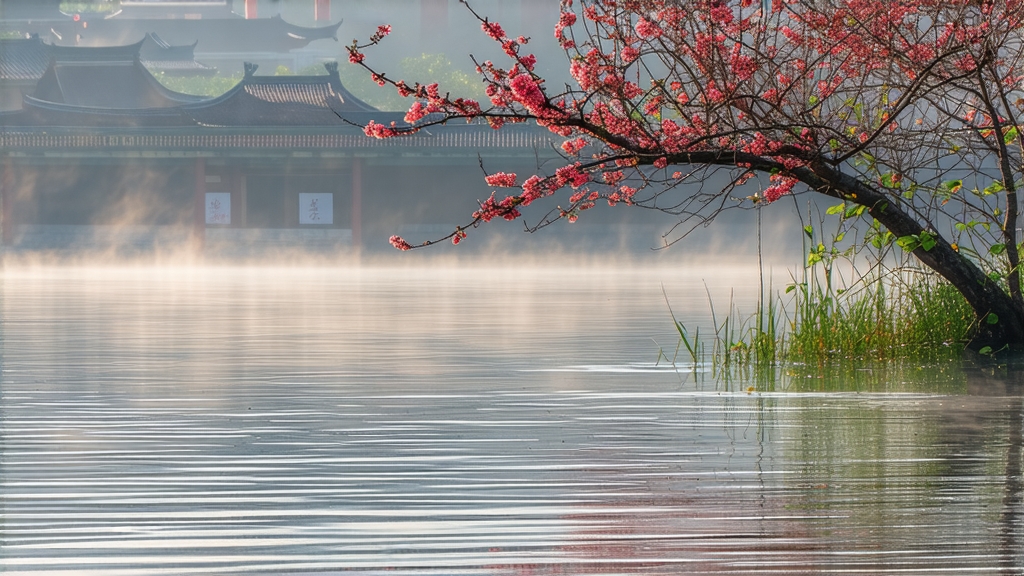
Biluochun, whose name translates literally to “Green Snail Spring,” is one of China’s ten most celebrated teas, yet it remains a quiet mystery outside the circles of serious tea lovers. Grown on the mist-lapped peninsulas of Dongting Mountain that rise from Taihu Lake in Jiangsu Province, this jade-green tea is prized for the tight spiral each leaf forms, a shape said to resemble a tiny snail shell picked fresh from early-spring waters. Its fragrance is famously seductive—so much so that the Kangxi Emperor, after tasting it in 1699, rechristened the tea from its rustic original name “Xia Sha Ren Xiang” (literally “scary fragrance”) to the more elegant Biluochun and declared it an imperial tribute. Since then, every March, when the peach and plum blossoms open and the lake vapors drift uphill into the tea gardens, the race to harvest the first downy buds becomes a ritual that unites farmers, poets, chefs, and emperors across centuries.
Although all Biluochun comes from the same micro-region, connoisseurs recognize three distinct styles dictated by micro-terroir and plucking grade. “Tender Peak” is picked entirely from the original Shi Hu cultivar growing on Dongting’s east cliff; buds are no longer than one centimeter, covered in white down, and deliver a glass-clear liquor with notes of white peach and watercress. “Lake Mist” is harvested one week later from the Fuding Da Bai cultivar planted on lower slopes; leaves are slightly broader, yielding a creamier body and a scent reminiscent of roasted almond and fresh loquat. Finally, “Wild Curl” is foraged from seed-propagated bushes scattered among fruit trees on islets accessible only by boat; leaf size varies, but the infusion carries an unmistakable wild-flower honey finish that lingers like sunset on the lake. All three styles share the signature spiral, yet each whispers a different seasonal secret to the palate.
Crafting Biluochun is a ballet of heat, moisture, and timing that must be completed within four hours of plucking to lock in the elusive aromatics. First, the just-picked shoots are spread in bamboo trays no thicker than two centimeters and allowed to wither for thirty minutes; this gentle dehydration concentrates amino acids while allowing floral precursors to form. Next comes the kill-green stage, unique among Chinese greens for its dual-temperature approach: leaves are hand-tossed in a wok pre-heated to 180 °C for exactly ninety seconds, then the temperature is dropped to 80 °C for another three minutes. The high heat destroys grassy enzymes, while the lower phase coaxes the leaf into its iconic spiral under the pressure of a palm-fist motion known as “rub-rub-roll.” After shaping, the curls are given a brief 60 °C “beauty bake” for six minutes, reducing moisture to five percent without dulling the emerald hue. The entire process consumes only 250 grams of finished tea per master per hour, making every kilogram the product of four artisans working in synchronized silence.
To awaken Biluochun without bruising its delicacy, water must be both soft and shy. Use spring water filtered to 50 ppm total dissolved solids, heated to 75 °C—any hotter will scorch the down and release bitter catechins. Pre-warm a tall, thin glass or a 150 ml gaiwan; this vertical space allows the spirals to pirouette as they hydrate. Measure 3 grams of tea, roughly one level tablespoon, and let it slide down the glass wall so the buds land in a loose heap. Pour 50 ml of water in a slow circle one centimeter above the leaf to avoid mechanical shock, then immediately swirl the glass three seconds and discard this first rinse; it is not for sanitation but to prime the curls for an even bloom. Now fill to the 120 ml mark, pause for twenty seconds, and begin sipping. The liquor should glow like pale chrysoprase; if it edges toward chartreuse, your water was too cool—if toward avocado, too hot. Subsequent infusions add five seconds each; quality Biluochun yields five aromatic steeps before its whisper fades.
Tasting Biluochun is best done in morning light against a white porcelain cup, because color is the first clue. Tilt the cup thirty degrees: a silver halo should rim the surface, indicating abundant amino acids. Bring the cup to the chin but not yet the nose; let the gentle steam rise to the philtrum and inhale through mouth and nose